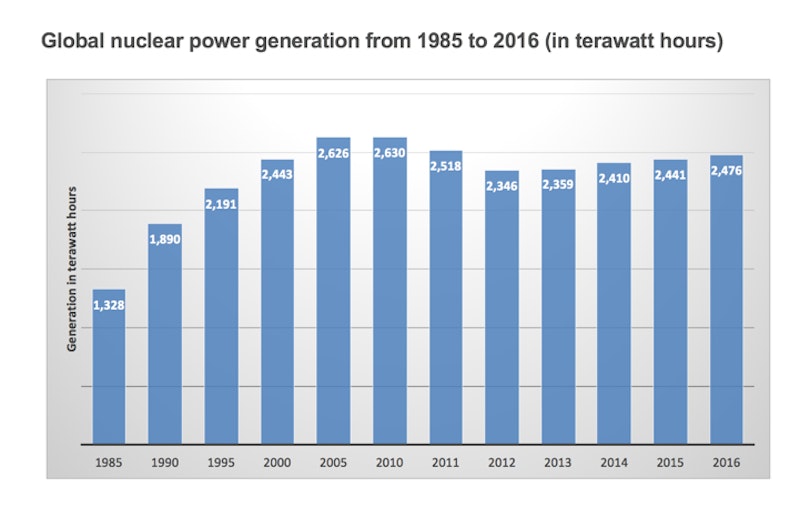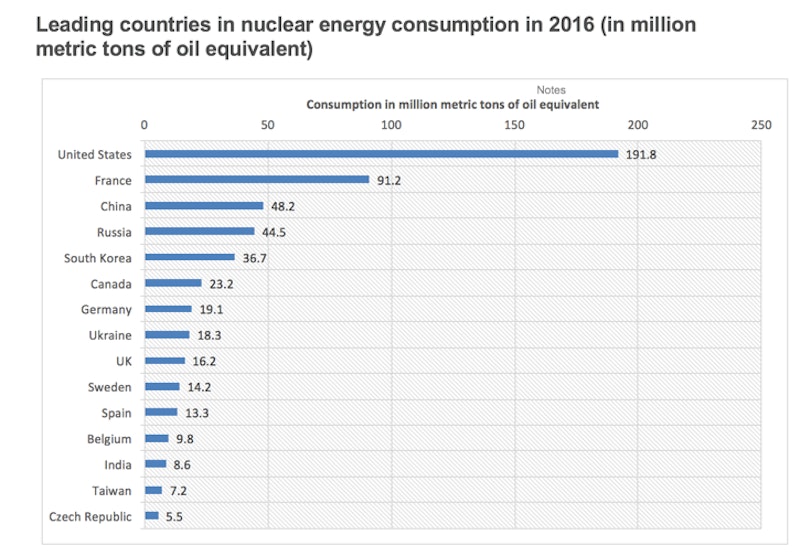Study Notes
Energy - Nuclear
- Level:
- AS, A-Level, IB
- Board:
- AQA, Edexcel, OCR, IB, Eduqas, WJEC
Last updated 2 Aug 2017
Key points on demand for and supply of nuclear energy include:
- The mining of uranium – the mineral required for the nuclear rods that trigger the nuclear fission reaction central to nuclear power stations – is dominated by Australia, Kazakhstan and Canada. They possess the largest reserves of uranium; however, Australia drops into third place in terms of annual production
- Only 31 countries have nuclear power stations (as of 2016), meaning that the use of nuclear energy, together with uranium reserves and production, are more geographically limited than the fossil fuels. This is largely due to the high investment costs of nuclear power station construction and the infrastructure needed to deal with nuclear materials and radioactive nuclear waste.
- In many of these countries, nuclear is a minor contributor to the total energy supply. France and Japan are notable exceptions to this. France generated 77% of its electricity from nuclear in 2014. At its peak Japan produced 30% of its electricity from nuclear, however this changed following the March 2011 Great Tōhoku earthquake and tsunami which led to the Fukushima Daiichi nuclear disaster. The emergency resulted in all of the country’s 50 nuclear power stations being closed down and as of August 2017, only five reactors are back in operation.
- A further 45 countries are considering developing nuclear energy as part of their electricity generation mix, including the UAE, Turkey, Poland and Indonesia.
- Much of the world trade in uranium and nuclear materials is monitored and reported on by the International Atomic Energy Authority, which reports to the UN and endorses the peaceful use of nuclear material.

